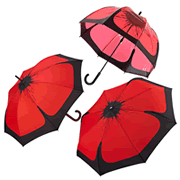WW1 Operational Theatres of War 1914-1920
Military operations of the First World War took place in seven theatres of war around the world.
Alphanumeric codes were assigned to each theatre and operational area within it. These codes were used by the British military for the compilation of records of service and medals.
The alphanumeric codes were slightly amended after 1st January 1916.(1)
Western Europe
To 31st December 1915 and from 1st January 1916
The Western FrontCode: 1
- a France and Flanders (also known as The Western Front)
- b Italy
Balkans
To 31st December 1915 and from 1st January 1916
Code: 2
- a Greek Macedonia, Serbia, Bulgaria and European Turkey
- b Gallipoli (Dardanelles)
Russia
From 1st January 1916
Code: 3
- 4th/5th August 1914 - 1st/2nd July 1920
Egypt
To 31st December 1915
Code: 3
From 1st January 1916
Code: 4
- a 4th/5th November 1914 - 18th/19th March 1916
- b 18th/19th March 1916 - 31st October/1st November 1918
Africa
To 31st December 1915
Code: 4
From 1st January 1916
Code: 5
- a East Africa, Nyasaland and Northern Rhodesia
- b South West Africa
- c Cameroon
- d Nigeria
- e Togoland
Asia
To 31st December 1915
Code: 5
From 1st January 1916
Code: 6
- a Hedjaz
- b Mesopotamia
- c Persia
- d Trans Caspia
- e South West Arabia
- f Aden
- g Frontier Regions of India
- h Tsing-Tau
Australasia
To 31st December 1915
Code: 6
From 1st January 1916
Code: 7
- a New Britain
- b New Ireland
- c Kaiser Wilhelmland
- d Admiralty Islands
- e Nauru
- f German Samoa
Related Topics
Battlefields of the Western Front
Related Link
British Army Medal Index Cards Abbreviations
Information on deciphering abbreviations for theatres of war, ranks and units is given in a helpful page on the National Archives' website:
Website: www.nationalarchives.gov.uk/records/medal-index-cards-ww1.htm
Acknowledgements
(1) Army Service Records of the First World War, by Simon Fowler, William Spencer and Stuart Tamblin, p. 43.
